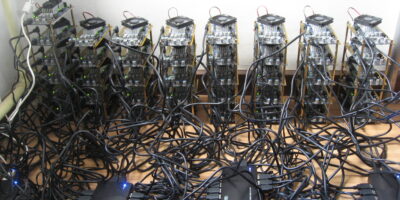We Have No Idea What the Future of Bitcoin and Blockchain Will Look Like
I’ve read a lot about Bitcoin this year, and I’ve learned a good deal. I’ve learned that it’s a dangerous speculative bubble. I’ve also learned that it’s not a bubble, and this year’s explosion in price is only the beginning. I’ve learned that Bitcoin will inevitably replace all government fiat currencies, as well as that governments will inevitably ban Bitcoin. It’s been explained to me that Bitcoin’s underlying blockchain technology is far more important to our future than Bitcoin itself. I’ve also been told that Bitcoin is the only application of blockchain technology with any usefulness.
It turns out there are a few things about the cryptocurrency world we haven’t quite worked out yet. So why do the above commentators, all smart and competent economists, investors, and journalists, reach such vastly different conclusions? Do some have hidden agendas or misguided economic ideas? It’s possible, but I’m going to propose something a bit more mundane: we genuinely have no idea what the world will look like with respect to cryptocurrencies and blockchain technology 10, 20, or 50 years down the road.
What good is economics if reasonable people can’t come close to reaching a consensus on even the most basic predictions? Russ Roberts wrote an excellent article earlier this year on what economists can and can’t do. Because of the complexity of the real world, and the impossibility of controlled experiments in most situations, economists rely on some combination of intuition, math, and statistical analysis. Roberts demonstrates how reasonable minds can disagree on longstanding questions such as trade and tax policy.
It therefore isn’t surprising that the future of Bitcoin and related technologies is extremely murky. These are new concepts that mostly didn’t exist 10 years ago. The market has had very little time to develop new blockchain applications or financial instruments based on cryptocurrencies. Most people have barely begun trying to understand the basics of the technology. But as economists and other observers form opinions about what’s going to happen, false certainty is rewarded. After all, people are intrigued and want to know what’s going to happen.
Some will say my take on this is a cop-out, that certain outcomes are inevitable for reasons x, y, and z. And then someone else will give you the reasons why the opposite is true. I challenge my colleagues to inject a little humility into their predictions, and write in terms of possibilities rather than inevitabilities. Because in reality, the future of Bitcoin and blockchain technology will look nothing like what anyone is predicting today.












